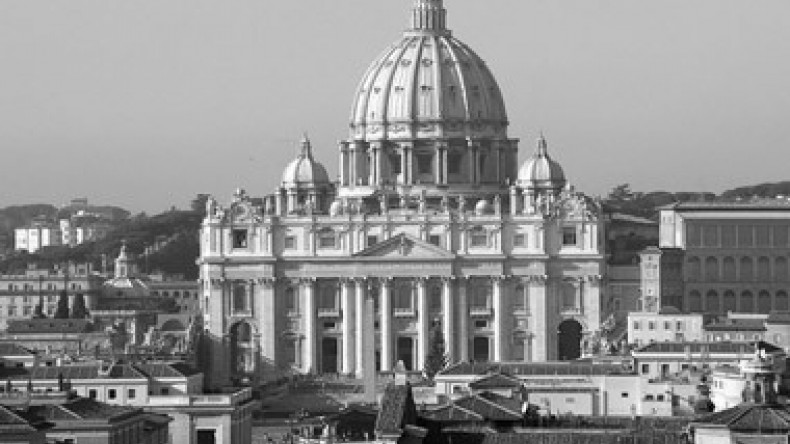
Rome welcomes us; as we saw it
Airplane pushes the clouds back, and it is there, Rome is long way below us. As I saw it, I thought - this is a city. I was longing to describe what I could see down there, and it feverishly made me find parallels or ways to describe it.
Rome, this is a real city…as if dough, called harmony that has been kneaded and sculpt. Looking from above, you see a masterpiece painted on the canvas unveiled with each next scene.
I’m thinking it’s good that the mayor of Yerevan Taron Margaryan has joined the delegation that Armenian President heads to the Republic of Italy. But let the impressions wait until we’re back to Yerevan.
A car, carrying the journalists from the airport, moves to Vatican, where Armenian President Serzh Sargsyan will have a meeting with Pope of Rome Benedict XVI.
The road is even narrower than the one we have in the airport in Yerevan. Light traffic jams, big bus, narrow streets…but not a single screaming Italian in the streets, as we are used to see in the films. Maybe, the Italian soup operas are cheating.
Everybody here is kind, polite…everybody’s smiling, greeting. Maybe, because, we are already in Vatican.
Another notion of how we will be checked in here, has also been broken down. I can say we were free to enter in. We have been accompanied to the hall where the Pope of Rome and President Sargsyan will meet. A little bit tensed but silent, we’re waiting. The parties enter, the photographers take photos, and the meeting seems more than interesting and solemn. More - to see the scene with your own eyes.
Both, the atmosphere, the meeting are cordial. Armenian President and Pope of Rome enter another room to continue their talks; while we share our impressions. It could be hear in Armenian – “The radio of Vatican.” In a couple of seconds Robert Ataryan, the Armenian community messenger, tells about their radio. This year the radio of Vatican celebrates its eightieth jubilee. The radio is available in forty-four languages. The Armenian service of the radio celebrates its forty-fifth anniversary, and has twenty minutes of broadcast every day.
“Twenty?”
“Nineteen,” corrects Robert and goes on.
As the meeting continues he manages to recall the year of two thousand, when John Paul the second and Garegin I signed a document where the word Genocide could be found.
“We can say that Vatican has recognized the Genocide,” states Ataryan.
We’re invited in; members of Armenian delegation approach to the Pope and shake hands.
At the end gift exchange ceremony is scheduled. Pope of Rome carefully listens to the President of Armenia. Official sources will indeed tell about this event. We are again invited out.
They’ve prepared Catholic crosses for us. Pope prepares it for all the visitors. Our guide suddenly declares that maybe Pope will host the journalists, too.
“Maybe,” says the unidentified person.
We hurry to get more information about the “protocol.”
Pope of Rome isn’t automatically moving his hand for a kiss, he carefully listens to the person introduced to him, and has left none of us without a word.
I like Rome. Perhaps, the Armenian community lives quietly here, as if at our place, in Yerevan, but without Armenian problems. At least you can’t see it on people’s faces.
The days are going to be rich.
As Armenian President and the delegation meet with Vatican's Secretary of State Cardinal Tarcisio Bertone, we talk to Armenian Ambassador to Italy Ruben Karapetyan.
The Ambassador seems inspired. We share with information, say that the Armenian delegation is going to visit St. Peter Cathedral where among other saints, a statue to St. Grigor Lusavorich can be found.
“Write about the khachkars (cross stones),” says the Ambassador, “Those cross stones standing in the cradle of civilization – Italy, in the center of Rome mean that Italy recognizes Armenian culture.”
I would say Rome displays them. I guess, member of delegation, Armenian Minister of Culture Hasmik Poghosyan will yet refer to this.
The Ambassador has also referred to the Azerbaijanis who waste huge funding to be presented here, but in vain (in the context of the cross stones).
He has signified Italy-Armenia mutual understanding, senior state meetings highlighting the mutual understanding and finally the exhibition that Italy hosts and which is called “Armenia: Signs of Civilization.”






Newsfeed
Videos






























